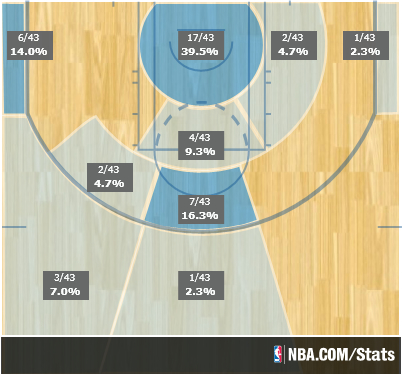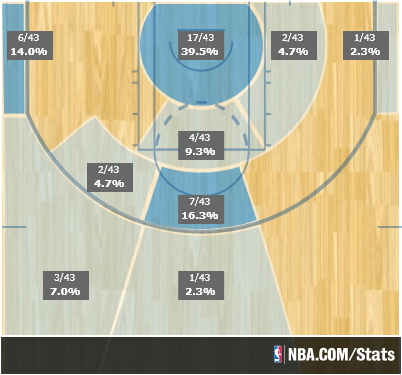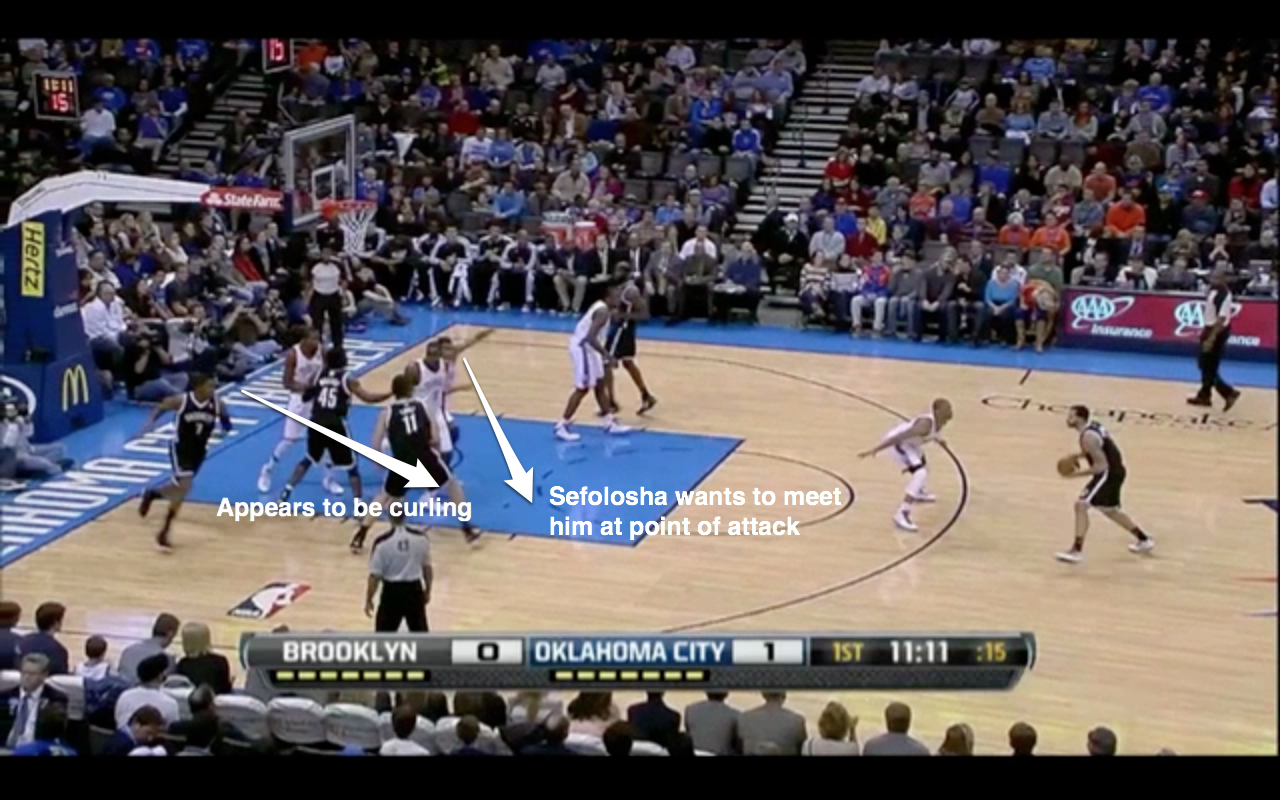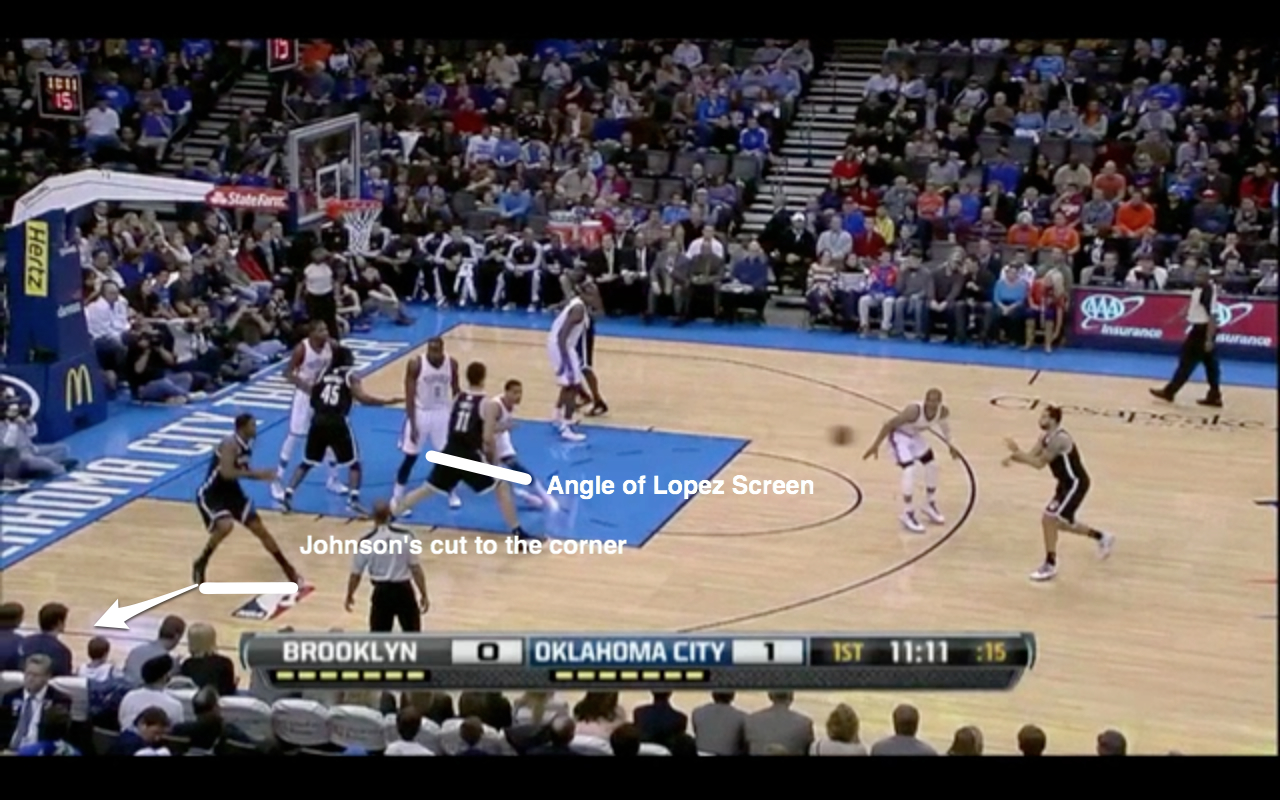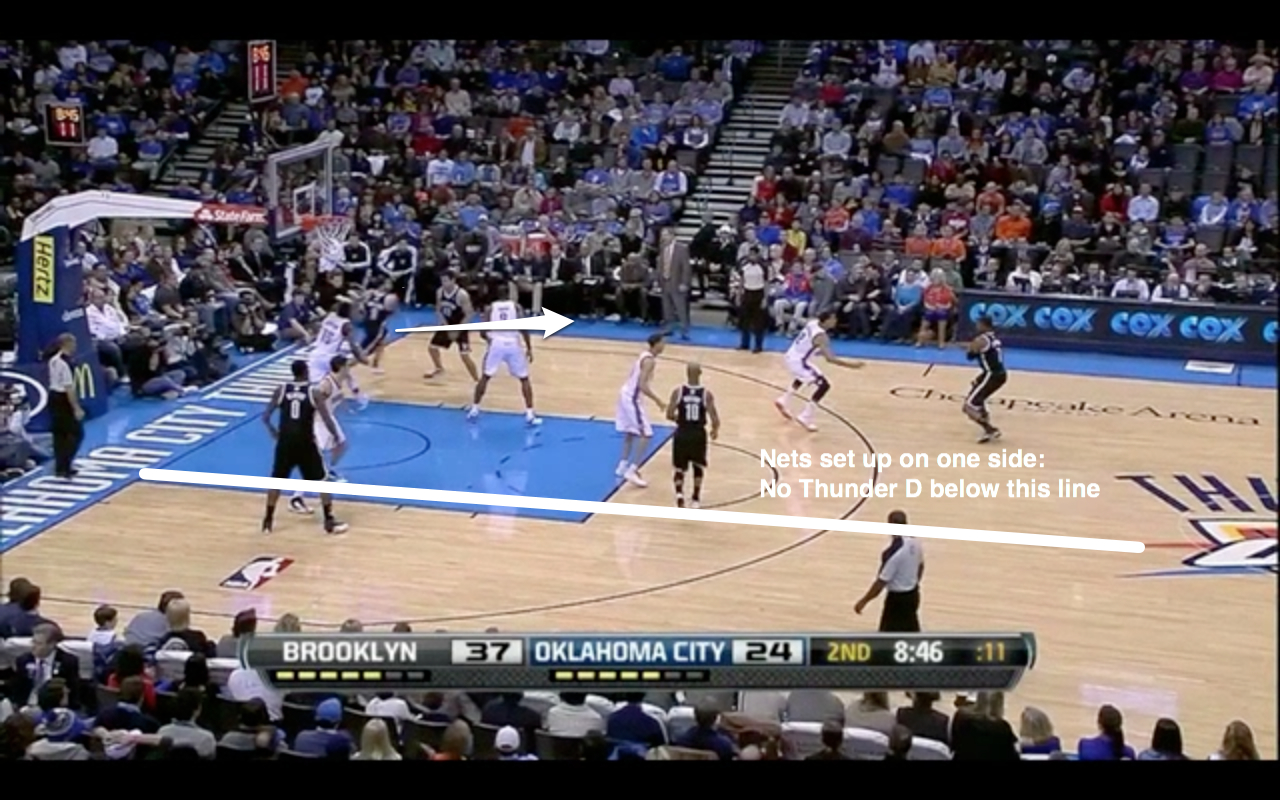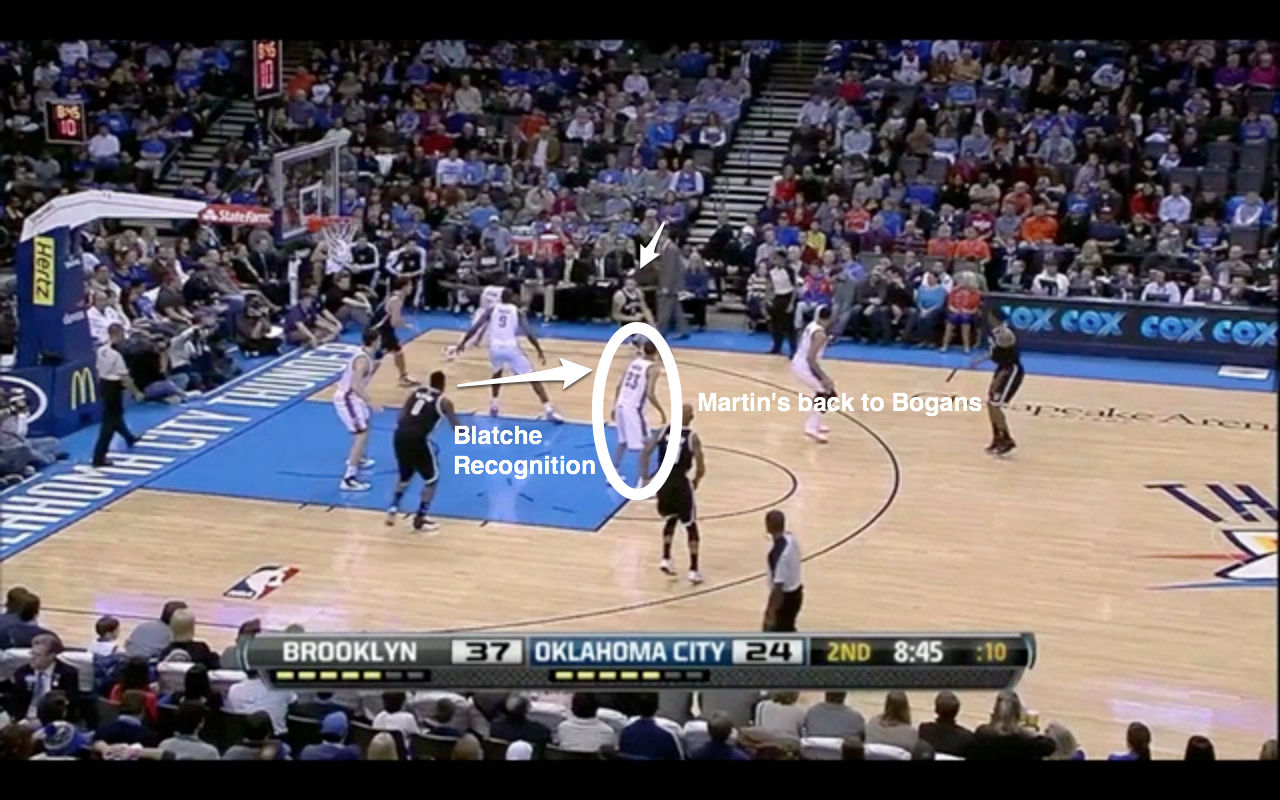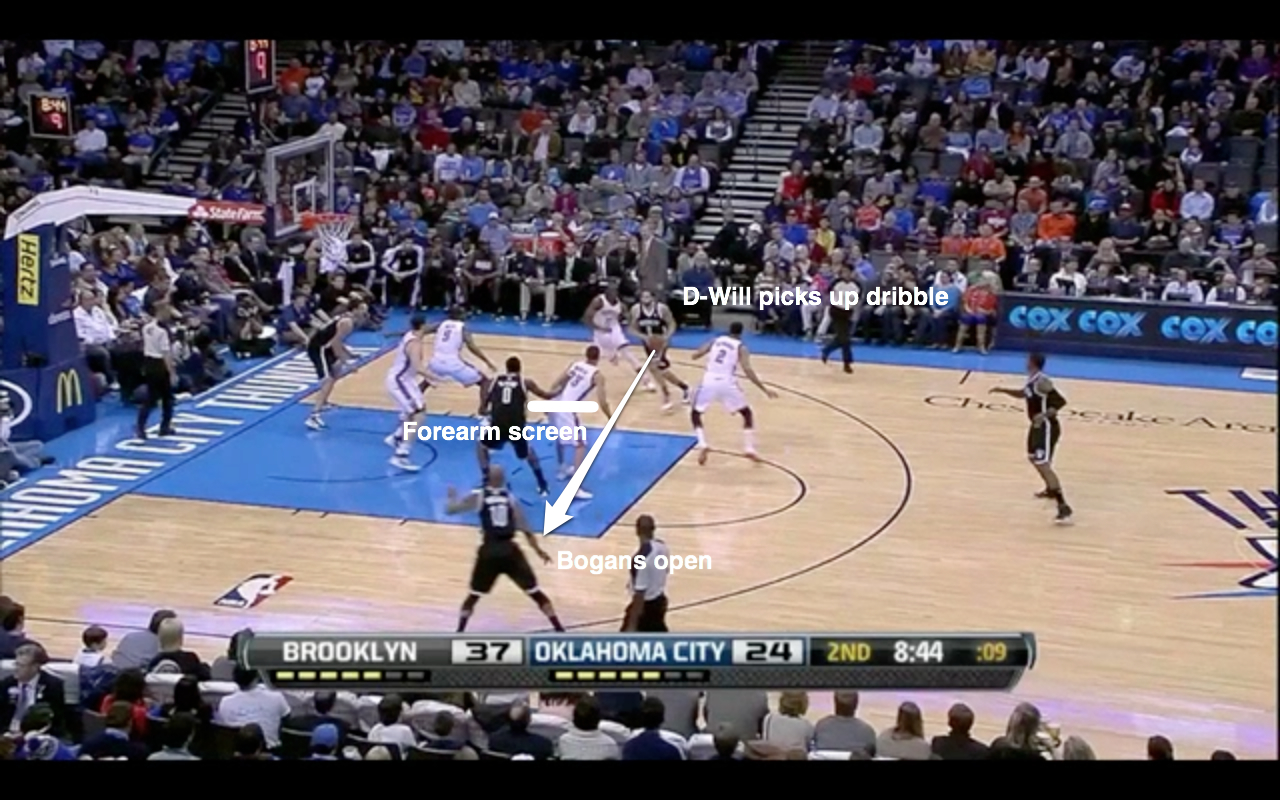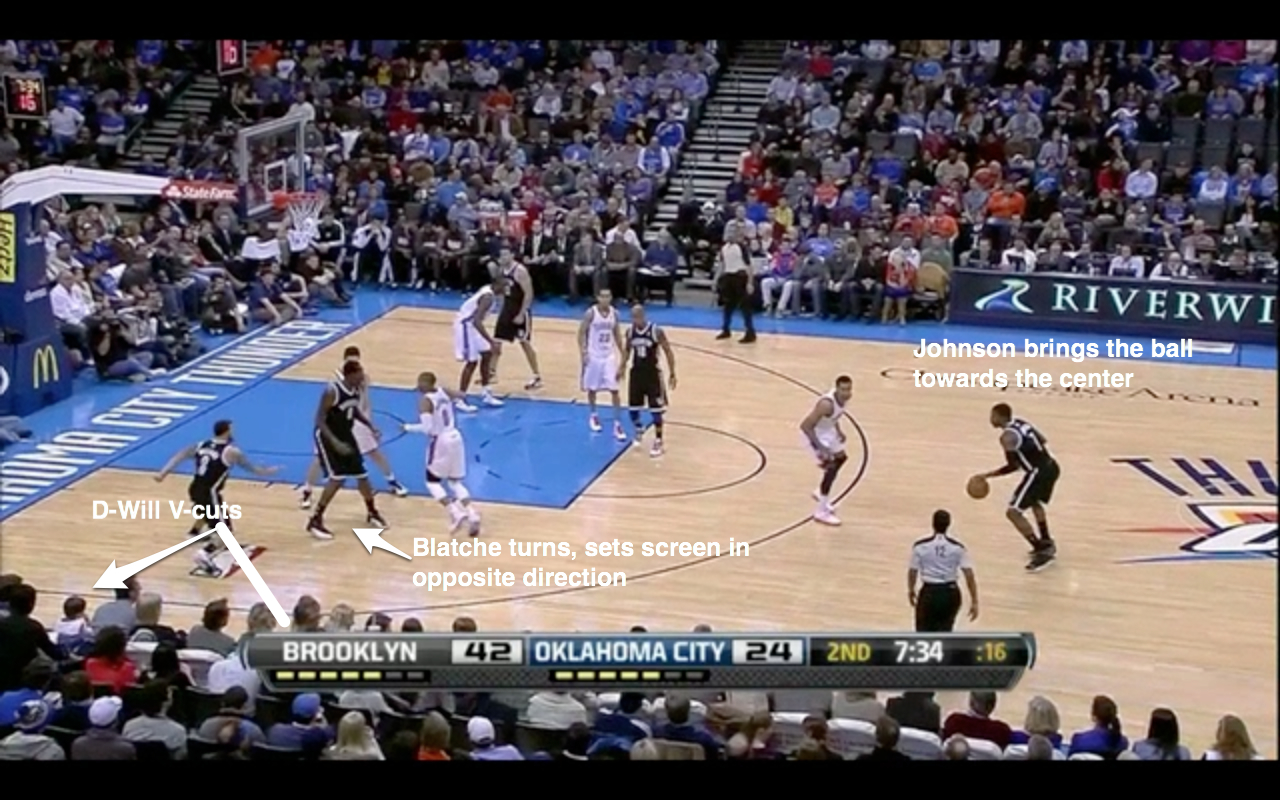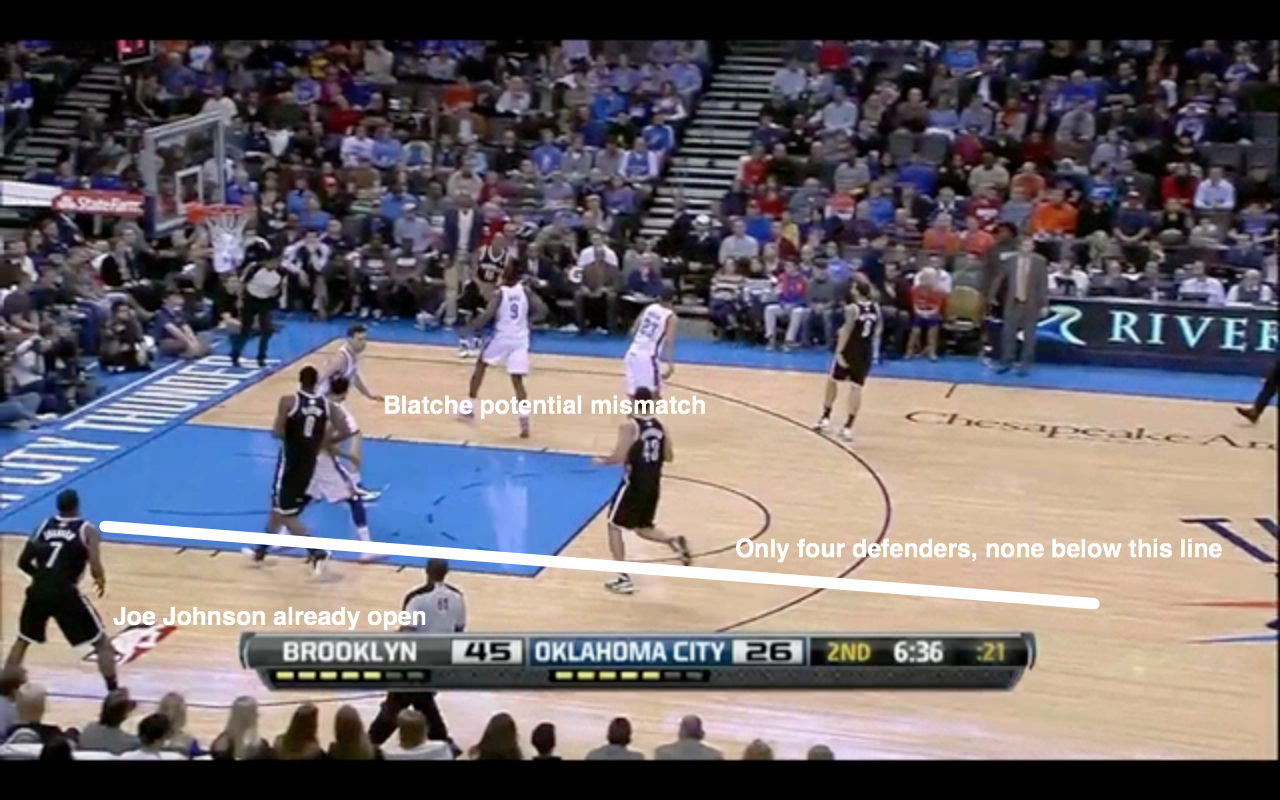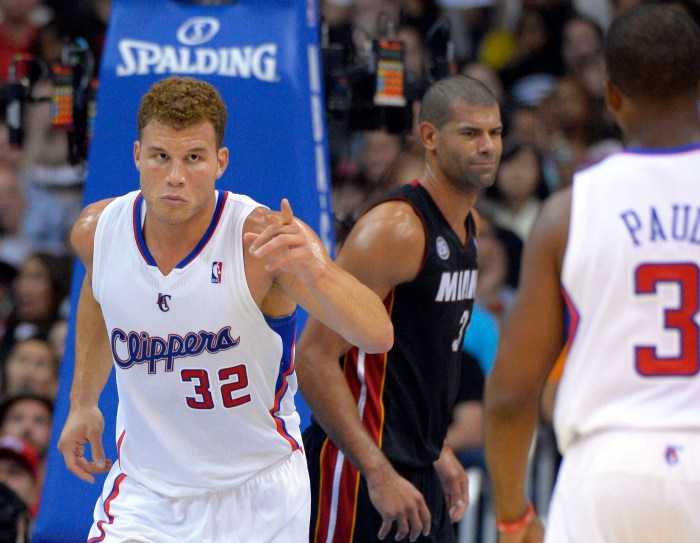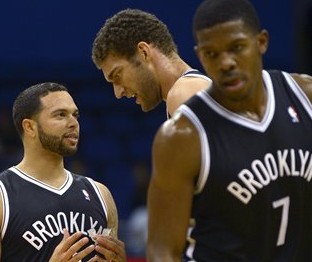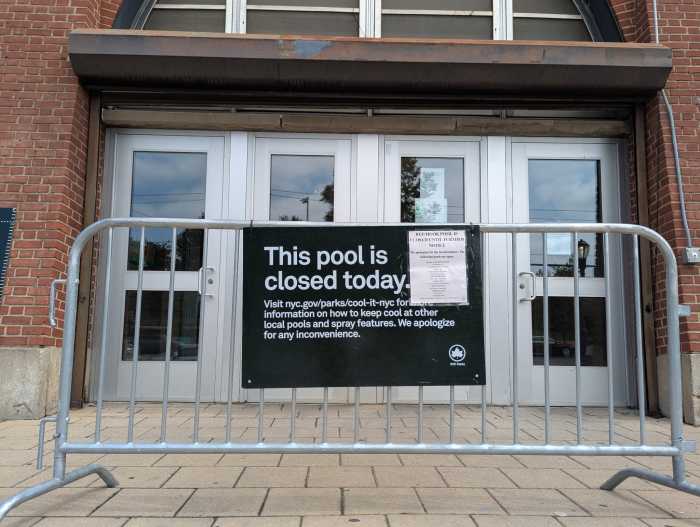The Brooklyn Nets shocked the Oklahoma City Thunder, Thunder fans, and Nets fans alike last night by defeating the Oklahoma City Thunder, 16-2 at home and 24-6 on the season before last night, 110-93. One of the Nets’ biggest strengths last night came from their long-distance marksmanship, as the team finished 9-17 from beyond the arc.
The Nets were able to get a variety of open shots by initiating offense on or going towards the right side of the floor, then quickly — added emphasis on quickly — swinging the ball left into space once the defense committed.
Check out the Nets’ first-half shot distribution chart below:
That’s just three shots from the right side of the floor, and forty from the left and center.
Most notably, the Nets had big success when they were able to get the ball in the left corner, hitting five of six left corner 3’s in the first half. Let’s take a look.
Opening the game
The Nets got started with this strategy early — this is just their second possession of the game. The play starts with Joe Johnson set up on the right side of the floor and Deron Williams dribbling up the middle. Brook Lopez runs just ahead of Williams, and once Lopez gets to the left-side block (shared with Gerald Wallace), the two set up a double screen on Joe Johnson’s defender, Thabo Sefolosha.
Because of the screening angle and the way Johnson curls up at first, Sefolosha reads that Johnson is coming up to the wing, perhaps for the Nets to initiate their standard down-screen set. The way Lopez is angled on the screen also indicates to Sefolosha that he’ll be coming up to the wing. But the Nets have a trick up their collective sleeve: instead of rolling up, he quickly cuts to the open corner.
The way Lopez adjusts his screen on the fly proves that this play is designed to get Joe in the corner: Lopez quickly re-angles his screen up to cut off the space to the corner, something you wouldn’t do if you think a player is rolling up to the wing. Sefolosha can’t get around the Lopez screen in time, Johnson gets an open shot, and the Nets get their first points of the game.
Williams to Bogo
On this play in the second quarter off an inbounds, Deron Williams curls off two screens in the post to get the ball in the corner:
The Nets have set up so that the right side of the floor is the strong side — Johnson and Williams are both spaced well out to the right side, with Humphries on the ball-side block, Bogans at the top of the key, and Blatche providing a little spacing. This setup keeps the Thunder defense entirely on the strong side of the floor, most notably pedestrian defender Kevin Martin, who’s guarding Keith Bogans.
As Williams catches the ball and begins to attack the basket, he commands the attention of the entire defense, including Martin, whose back is now completely to Bogans. Bogans recognizes this, and more importantly, so does Andray Blatche, who gives Martin a little forearm screen in the shot below.
Right as Williams picks up the ball to swing it to the open Bogans, Blatche holds off Martin for just a split second longer, giving Bogans just enough time to get an open look and knock down the three.
Quick hit to D-Will in the corner
I love plays with misdirection, so this one speaks to me. Another setup out of an inbounds play, the play starts off with Andray Blatche setting up to apparently screen Deron Williams going towards the right side. Humphries & Bogans are set up in a stack on the other side of the floor, which is another indicator that Williams will curl around the court to catch the all on the other side. Additionally, Johnson dribbles the ball closer to the center of the court, another sign that the play’s going to the right side of the floor. But the team is again throwing a trick at Oklahoma City.
On a dime and in rhythm, everything goes the opposite direction. Williams v-cuts back towards the corner just as Westbrook gets around Blatche’s dummy screen. Blatche pivots, now stopping Westbrook from getting back towards Williams. Johnson brings the ball back to the left side to give himself an open passing lane. And despite a solid attempt to contest by Nick Collison, Williams has enough space to bury the three.
Blatche passing it up
This may be my favorite play at all, because it’s pure creativity. The Nets get a rebound, and since Russell Westbrook fell in the backcourt, Deron Williams immediately sees a five-on-four opportunity. He dribbles the ball up the right side, and since the Thunder only have four defenders, they have to stack the strong (right) side of the floor.
The Nets get the ball to Bogans in the right corner, further drawing the defense into the right side. Bogans sees that Blatche has a potential mismatch inside and passes him the ball.
This is where Blatche’s newfound maturity surprised even me: in a situation like this, even when he’s this far under the basket, you expect Blatche to pound backwards and try to find himself a layup, even with the 5-on-4 quickly dwindling as Westbrook returns to the play and even though a potential double-team is coming. But instead, Blatche thinks quickly, sees Johnson open in the corner, and doesn’t think about his shot once.
The Nets let the lead dwindle in the second half, but it was only because of their effective scoring in the firs half that they had a lead to give up. That effective scoring came from quick hitters like these four, in transition and in the halfcourt, misdirections that fooled the Thunder defense into thinking that the play was going one way when it was going the other.
Without that cushion, the Nets don’t win this game. If they can continue to use the weak side as strongly as they did against Oklahoma City, December will quickly become a distant memory.

